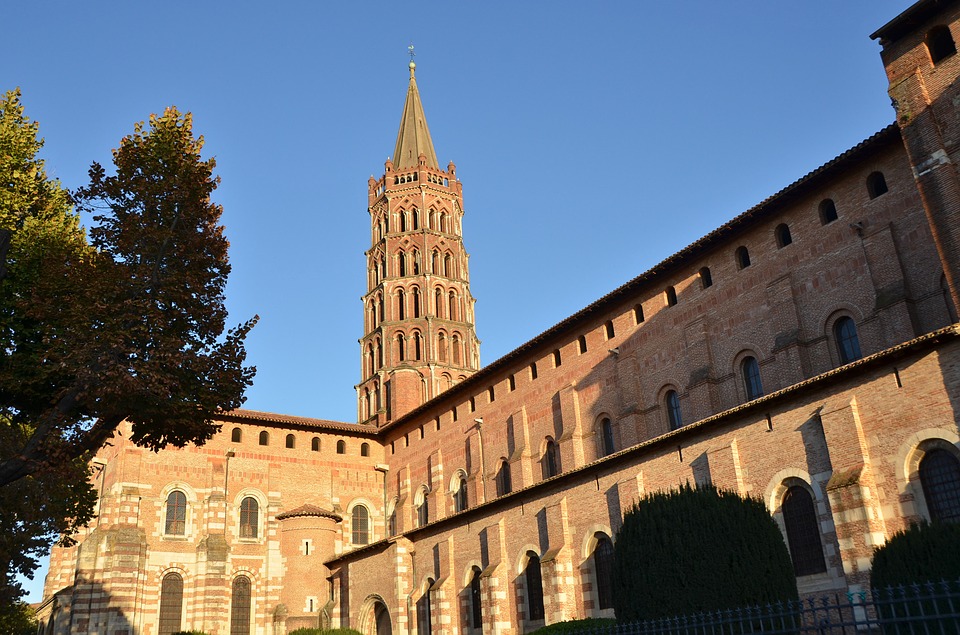Two words sum up medieval Toulouse: churches and troubadours. The city has a long history as a religious centre. Before the French Revolution did its worst, there were 57 churches and convents in Toulouse. Which to visit today? We’d suggest at least the two blockbuster sites, Saint Sernin Basilica and the (now deconsecrated) Couvent des Jacobins. You’ll find grisly tales from history in both, plus stunning architecture and intriguing links to the Middle Ages. This post gives a little background and then summarises two other aspects of Medieval Toulouse: the violent history of persecution against the Cathars, and the much more cheerful story of the troubadours, who travelled the area performing their songs and poetry.
saint-sernin
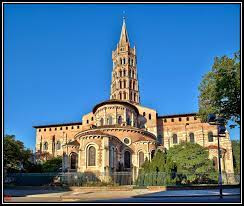


The huge and beautiful Saint Sernin Church is recognised by UNESCO as a key building on the Pilgrimage route to Santiago di Compostela in Spain. Its founding goes back to the gruesome story of Sernin, the first bishop of Toulouse, who was martyred for refusing to sacrifice a bull as his Roman masters demanded. As a punishment, they tied him to the animal and had him dragged through the streets until he was dead. In the 5th century, the first version of this church was built over his sepulchre, and the current building, begun in 1080, was built on the same site. The bishop’s name lives on in the church and his fate is remembered in the name of a nearby side street, the Rue du Taur.
Inside it’s massive. Wander the ambulatory, all around the edge, designed so visiting pilgrims could look round without disturbing the services. Many pilgrims gifted relics such as the bones of saints to the church and the best artists, sculptors and goldsmiths of the day were employed to make reliquaries to house them. This collection, which survived the ravages of the revolution because the clerics were canny enough to hide it away, is on display in the church and the crypt. Other things to look out for include the 11th century marble reliefs in the ambulatory – Christ, some of the apostles, 2 angels – and a set of polychrome wooden statues of the apostles from the 14th century.
the couvent des jacobins


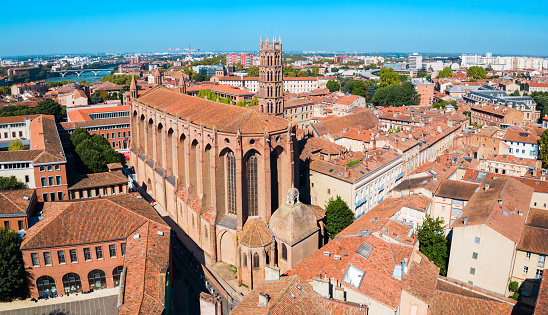
This early 13th century beauty, the Couvent des Jacobins, is now deconsecrated, but still features a stunning interior, cloisters and a medieval refectory. It too has a grisly history, having been founded when Saint Dominic, en route back to Spain from Rome, decided to stay in Toulouse and fight the Cathars. This pious group of Christians roused ire and fury in the established church because of their non-acceptance of some aspects of Catholicism. Dominic is said to have fought them with ‘humility, poverty and charity’, but it must be added that the suppression of the Cathars also involved inquisitions, torture and murder.
This is the burial place of St Thomas of Aquinas, the philosopher whose writings sought to reconcile faith and ‘reason’ and who was canonised in the 14th century, some 50 years after his death. The pope ordered that he should be reburied here, at the founding site of the Dominican movement and 150,000 of the faithful duly set off for Toulouse with his remains. Every January 28th – his Feast Day – there is a pilgrimage here in memory of this epic journey. Perhaps because of its link to Thomas Aquinas, the church was used as the first university building in the city, and later became the Faculty of Theology.
religious wars in toulouse
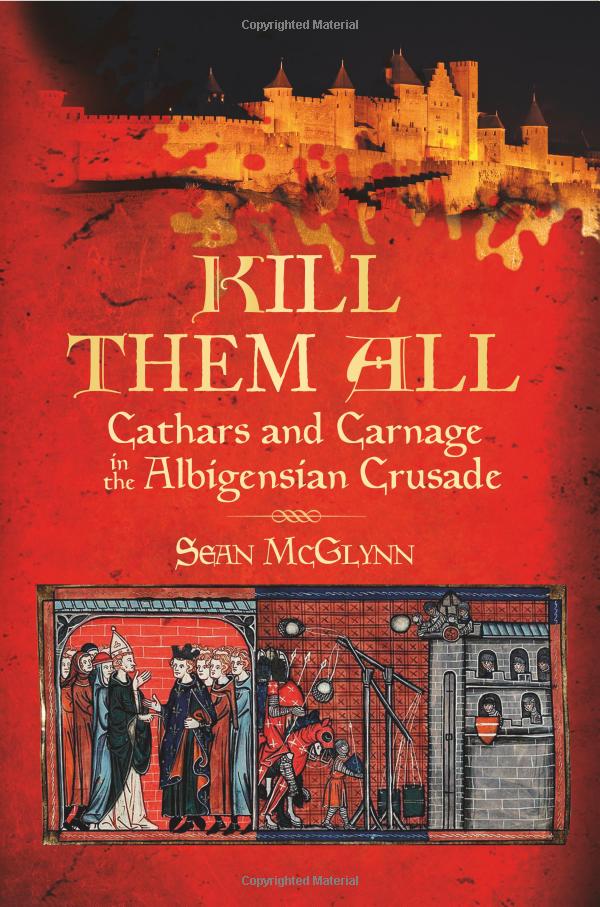
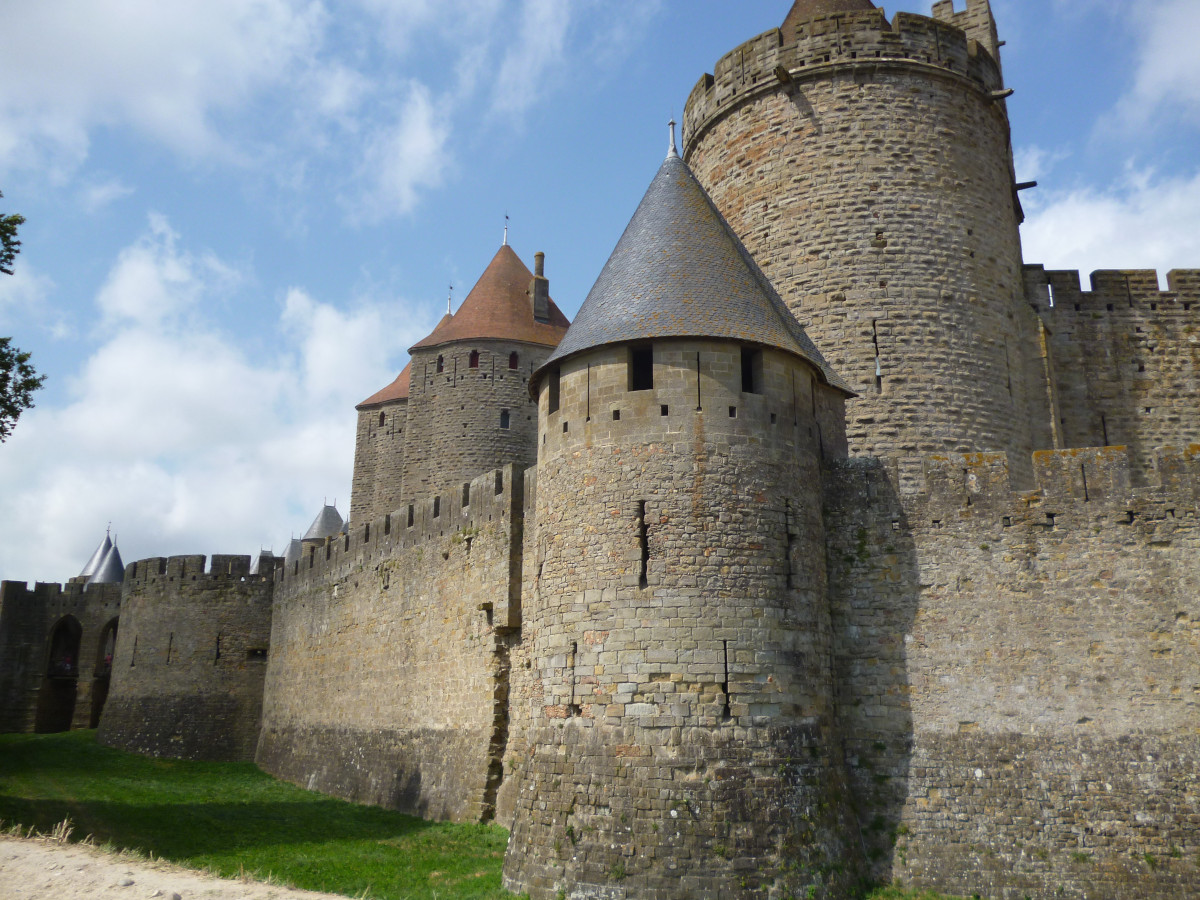

Toulouse, in fact all of Languedoc, was riven by religious wars in the 13th century. The ‘alternative’, Cathar religion was a much plainer version of Christianity than Catholicism, denying ‘the miracle of the mass’, embracing a simple piety and contrasting sharply with the powerful, wealthy Catholic church. The latter opposed them bitterly, but not everyone in Toulouse was willing to persecute the Cathars. One of the city’s rulers, Count Raymond VI, was ex-communicated for failing to stamp out Catharism and the city came under repeated attack. There’s much more detail on the podcast, but to give a flavour, the murderous reaction of one pope was to send a crusade against the dissenters, instructing his followers to ‘Kill them All.’
Contrasting ways into this complex subject can be found in two very different books. Sean McGlynn’s detailed history of the period ‘Kill them All’, is subtitled ‘Cathars and Carnage in the Albigensian Crusade’ which rightly indicates that this is not a story for the faint-hearted. And Kate Mosse’s Labyrinth, the first volume in her Languedoc trilogy, illuminates the Cathar era through two intertwining narratives, that of Alaïs, a young Cathar girl in 13th century Carcassonne and Dr Alice Turner, a 21st century archaeologist whose excavations reveal links to the period.
Troubadours



Medieval Toulouse: churches and troubadours both play their part in the culture. Troubadours, the wandering poets and musicians who travelled through the Languedoc in the Middle Ages, are a reminder that there is more to the period than religious faith or strife. They wrote in the local language, Occitan, which meant all could enjoy their work. Their themes were grand and inspiring – chivalry, courtly love – and their characters were the knights and the unattainable ladies whose love they sought to win. Their tales reverberated down the centuries, seen in the works of Petrarch and Dante, both of whom created idealised female characters – Laura and Beatrice – and in romantic fiction ever after.
Eleanor of Aquitaine’s father, Guilhem de Peitieu, was one of the first troubadours. Later, one Peire Vidal toured Languedoc and further afield, entertaining all with his love songs, and also with the political songs he wrote to please his master, one of the (many!) Raymonds who were Counts of Toulouse. The troubadour had, said critics at the time, a ‘penetrating intelligence’ and an excellent understanding of people and their foibles. A painting illustrating the pleasure people took in gathering to hear visiting troubadours hangs in pride of place inside the Capitol, a reminder of the jollier aspects of Languedoc in the Middle Ages.
listen to the podcast
reading suggestions
Kill Them All by Sean McGlynn
Labyrinth by Kate Mosse
Previous Episode Introduction to Toulouse
Next Episode The Capitol
links for this post
Saint Sernin
The Couvent des Jacobins
Last Updated on November 21, 2024 by Marian Jones

